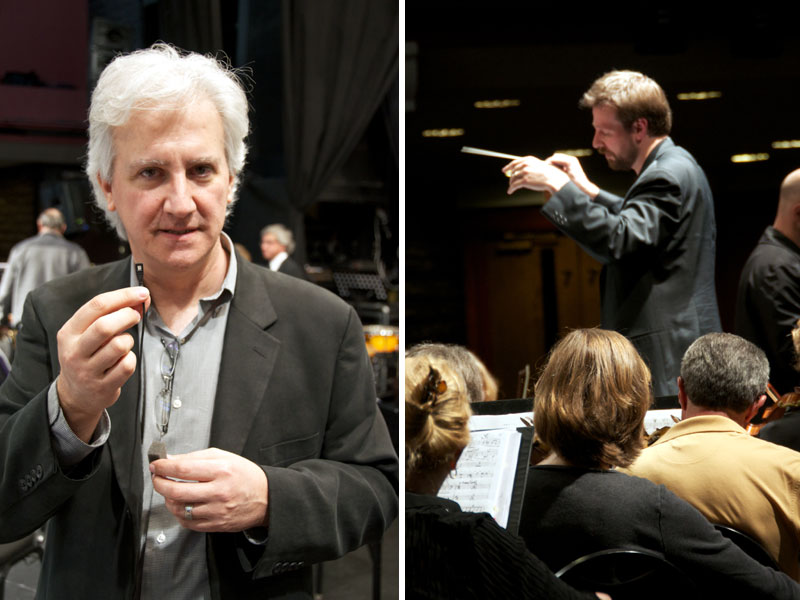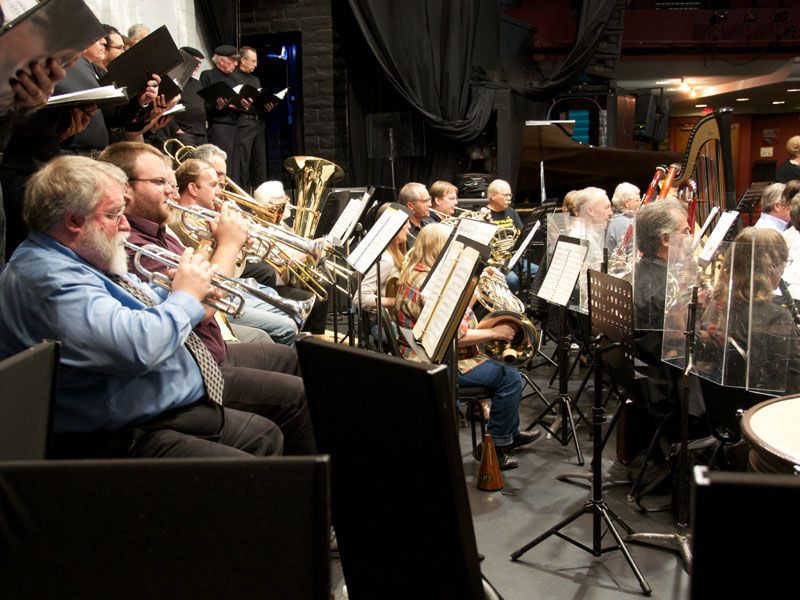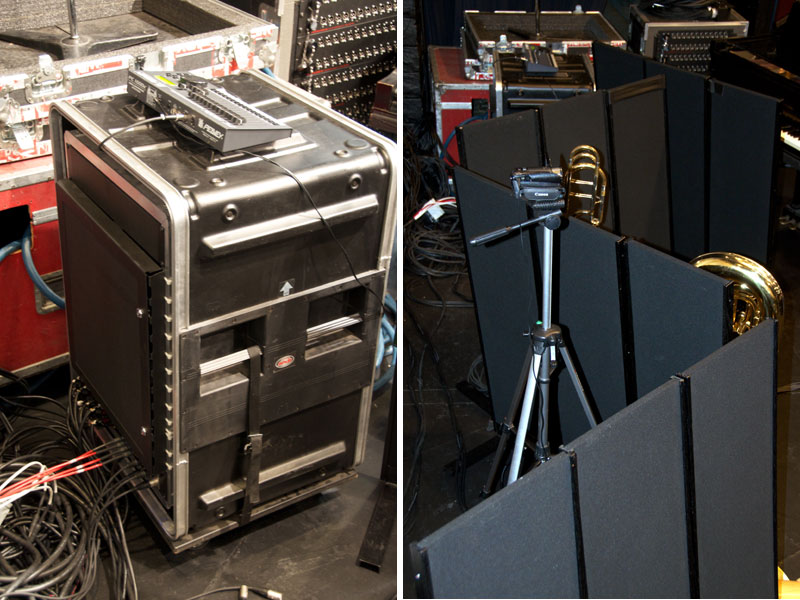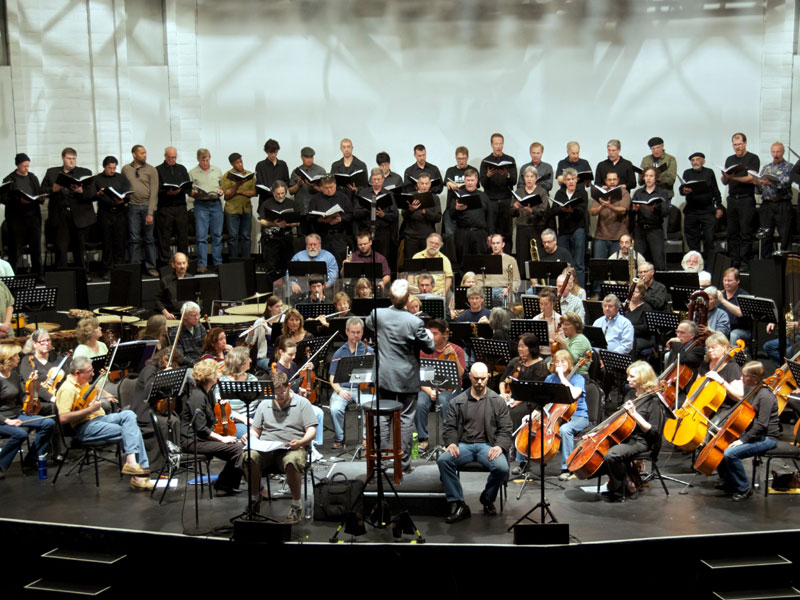OSIRES and Magnepan: Reinforcing Music-Making
ow many musicians does it take to fill out a modern orchestra? Not as many as you might think if physicist, equipment designer, conductor and community-orchestra founder Gabriel Sakakeeny and speaker manufacturer Magnepan get involved. Sakakeeny founded the American Philharmonic of Sonoma County, California, twelve years ago and has acted as its musical director and conductor since. While he has been a conductor since 1969, the other side of his brain has carried on a parallel existence as a designer of audio electronics and lately sound-reinforcement solutions. In the late 1970s, Sakakeeny was involved in setting up operations of Precision Fidelity. He designed the M-7 amplifier and C-7 preamplifier, which received rave reviews in the high-end press in the early 1980s.
Beginning in 1995, Sakakeeny began developing a sound-reinforcement software system named OSIRES (for Orchestral String Instrument Reinforcement Enhancement System), or as he calls it "the system." While that may sound like something out of a James Bond movie, in fact it’s a spread-spectrum approach to sound reinforcement. In plain English, it’s a system for making a small orchestra sound larger than it is. As currently operating, up to twelve instruments can be separately miked, fed into Sakakeeny’s proprietary stack of electronics and played back through arrays of speakers placed on the orchestra stage but out of sight. I recently visited Sakakeeny and his orchestra for a demonstration of OSIRES and to enjoy a program of American music. I watched the system being set up and the orchestra’s rehearsal, and then enjoyed the performance to judge the effect of the system. On the date of my visit, the first half of the program was a collection of greatest hits of American composers -- Bernstein’s Candide overture, Barber’s Adagio for Strings and Copland’s Appalachian Spring. The second half was devoted to the West Coast premier of Bernard Herrmann’s Moby Dick. Guest conductor and Herrmann fanatic John Kendall Bailey led the program. The string component of the orchestra consisted of sixteen violins, four violas, eight cellos and two basses. "The system’s" current iteration has twelve channels, and for this program Sakakeeny employed eight of them, miking four violins, two violas, and the two basses. Each of the eight instruments was separately miked with an omnidirectional microphone and fed into one of two boxes of amplification components and computers incorporating Sakakeeny’s trade secrets. Performers each had their microphone channeled through a pedal device similar to that used for an electric piano, allowing them to bypass the sound-reinforcement system when playing solo by depressing the pedal.
In the foreground: one of the violin "triads." From the amplifiers, the lines are directed to one of two arrays of Magnepan MMG speakers -- one bank placed on floor level stage left and the other stage right, behind the orchestra but ahead of the chorus, which was used for Moby Dick. A Peavey control panel allows adjustment of the outputs of the eight feeds. Violins and violas are directed to three triads of MMGs: the three Maggies in each group are tied together side to side to form triangles of speakers. The basses were directed to another series of MMGs arranged in a zigzag array on the opposite side of the stage. Sakakeeny optimized these configurations to randomize phase. Why Magnepan speakers? Because they radiate sound in a similar way to stringed instruments. As Sakakeeny explained, "All Magneplanars are dipoles, so they have a figure-8 polar response. At the frequencies of interest (32Hz to about 4000Hz), they are mostly omnidirectional due to the two-way or three-way (depending on the model) vertically oriented quasi-ribbon drivers. . . . This is one of the reasons that audiophiles think they sound so natural and transparent -- the direct sound has a similar spectral balance to the reflected sound coming from the listening room. This makes them ideal for use in the stringed-reinforcement system."
Some of the OSIRES electronics (left) and the bass "zigzag array" (right). The MMGs have been in service since 2000. However, because they have been used solely for the OSIRES system, they only have 250-300 hours on them. The speakers are rugged and show the constant stage use, but they appear to have survived the conditions without ill effect to their sound. The speakers were powered by six-channel Crown industrial amplifiers rated at 75Wpc. The preamp was an HHB Radius Series 10 microphone preamp, which Sakakeeny chose because it allows him to change the transconductance of the tubes. The concert hall has a Lexicon reverberation system installed that feeds 60 speakers. This is not unusual for a hall of this type. Originally built as a very large church facility, the hall accommodates 1600 in the audience, with a very large orchestra seating section, large wings, a shallow balcony and cinder-block walls. The Lexicon system seems to tame some of the more challenging aspects of the layout and construction. Even with that taming, the hall presented some pretty large variations in sound from place to place, but the orchestra section midway back allowed for surprisingly good sound. So it was from there that Sakakeeny demonstrated the use and adjustment of the OSIRES system. The intent of the system is to allow for the doubling of each part fed with a microphone. The adjustments help the phantom "extra players" blend into the mix without sounding amplified or lost in space. The speakers are set to play back at very low volume, as they are designed to augment the reverberated sound of the room rather than replicate the miked instrument. I’ve been to innumerable amplified shows in everything from large venues to small jazz clubs, so I’ve experienced the range of possible sound quality -- from truly unlistenable, to merely annoying, to decent. It’s rarely the equal of live unamplified sound, however. The first thing that became clear upon hearing this system dialed in was that it shared nothing with normal amplified stage sound. At its best, this means that you are hearing the instruments amplified through speakers, and unless you are sitting in one of a handful of front-row seats, you hear no direct sound from the instruments at all. With OSIRES, you are offered a horse of an entirely different color. Taking one instrument in isolation -- for example, the first violin -- you do not hear the violin amplified. You hear it live without electronic enhancement. The point of the system is that you will also hear, if not a replication of that same player, an echo or suggestion of such replication. That "shadow" player makes the very same music, warts and all. If balanced correctly, that instrument does not sound amplified or simply like the unamplified instrument twice as loud. It sounds like there might be another person playing the same violin somewhere in the violin section.
The orchestra and chorus. OSIRES is heard but not seen. During rehearsal and system optimization, I watched and listened as Sakakeeny adjusted the levels for each of the twelve channels and demonstrated the effect of cutting out the amplification. I also moved around on stage and listened to the speakers up close, which was the biggest surprise. At a concert, try placing your ear close to a stage speaker during the performance and you will be treated to immediate hearing impairment. Not so with the Magnepan MMGs as driven by OSIRES. The closest comparison I can think of is the sound of rear channels in a multichannel setup. Listening to one spot in the array, you hear only diffuse, background-level sound. Only by moving back into the audience sweet spot did I hear the instruments gel into a finished product. Sakakeeny has high hopes of developing "the
system" into a viable product that he can market to others, and he’s working on
version 2.0 of the software that will use 24 channels, which should make it possible for
24 string players to sound like 72. We’re living in a crazy world, where people can
get rich by developing game apps where birds shoot at pigs. I hope, therefore,
there’s room for OSIRES to see broader application, as it certainly seems to work. |




